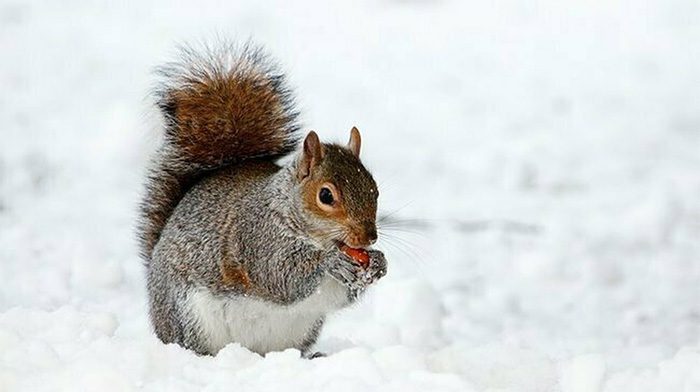The first mammals in the Arctic to respond to global warming are ground squirrels. This change signals shifts in the food chain that humans may not fully anticipate.
Arctic ground squirrels are unique mammals that stand out for their remarkable ability to avoid freezing even when their body temperature drops below 0°C. This adaptation allows them to survive the harsh winter climate of the Arctic. A recent study published in Science analyzed over 25 years of climate and biological data.
The new findings include shorter hibernation periods and differences in hibernation duration between males and females. The data reveals that females wake up and become active slightly earlier to cope with warming, which may have both positive and negative ripple effects throughout the food chain in these ecosystems.

Arctic ground squirrels have shortened their hibernation period.
Author Cory Williams, an assistant professor in the Department of Biology at Colorado State University, began researching Arctic ground squirrels while at the University of Alaska Fairbanks over 15 years ago. Williams stated, “What makes this research unique is that we are examining a sufficiently long data set to illustrate the impact of climate change on Arctic mammals. We can point to a direct connection between temperature changes and the physiology and ecosystems of these animals.”
Helen Chmura, the lead author of this latest study, began her analysis while a postdoctoral researcher at the University of Alaska Fairbanks in 2018 and is currently working as a researcher with the USDA Forest Service at the Rocky Mountain Research Station. Chmura remarked, “Our data show that the active layer, which is the soil above the permafrost, is freezing later in the fall. It is also not as cold in mid-winter as before and is thawing slightly earlier in the spring. These changes correspond to a reduction of about 10 days in the duration of frost at a depth of one meter. This process has occurred in just 25 years, which is quite fast.”
Arctic ground squirrels survive the harsh winters in Alaska by hibernating for more than half the year, significantly slowing their lung, heart, brain function, and generally most of their bodily systems. They still need to expend enough energy to generate heat from stored fat to prevent their tissues from freezing. Each spring, they emerge from burrows that are typically about 1 meter deep in a state of hunger but eager to mate.
Chmura and Williams, along with other colleagues, analyzed long-term data on soil and air temperatures at two sites in Alaska (part of the Arctic Circle) combined with data collected using biological sensors. They measured the temperatures of 199 free-ranging ground squirrels over the same 25-year period. They found that females are changing as they end hibernation earlier each year, but males are not doing the same.
The changes in females align with earlier spring thawing. The advantage of this phenomenon is that they do not need to use as much stored fat during hibernation and can start foraging for food such as roots, shoots, fruits, and seeds earlier in the spring. Scientists believe this may lead to healthier litters of young squirrels and higher survival rates.
The downside is that if males do not also change their hibernation habits, they may ultimately miss the opportunity to court and mate with females. Ground squirrels are also a significant food source for many Arctic predators such as foxes, wolves, and eagles. The indirect consequence of being active on the ground earlier is an increased likelihood of predation.
What will happen to the population of ground squirrels remains a significant mystery, as the shortening of hibernation and earlier activity does not clearly indicate whether it will lead to better reproductive success or reduced numbers. While prolonged hibernation allows ground squirrels to require less energy, which may help them survive the winter, their population numbers also depend on how predators respond to climate change.
In conclusion, Williams stated, “Our report highlights the importance of long-term data sets in understanding how ecosystems are responding to climate change.” Chmura agrees with this perspective, noting, “A quality research team is needed to continue collecting and analyzing data like this for another 25 years, especially in the Arctic.”
Other contributors to the research include Brian Barnes from the University of Alaska Fairbanks and Loren Buck from Northern Arizona University. Both began this research in the 1990s to understand how Arctic ground squirrels endure the long, cold, sunless winters lasting six months. These questions drove them to become the first to install soil temperature sensors in the area where Arctic squirrels live, and as technology improved, they were able to measure those temperatures throughout the winter. Cassandra Duncan and Grace Burrell also supported the research while they were students at the University of Alaska Fairbanks.


















































